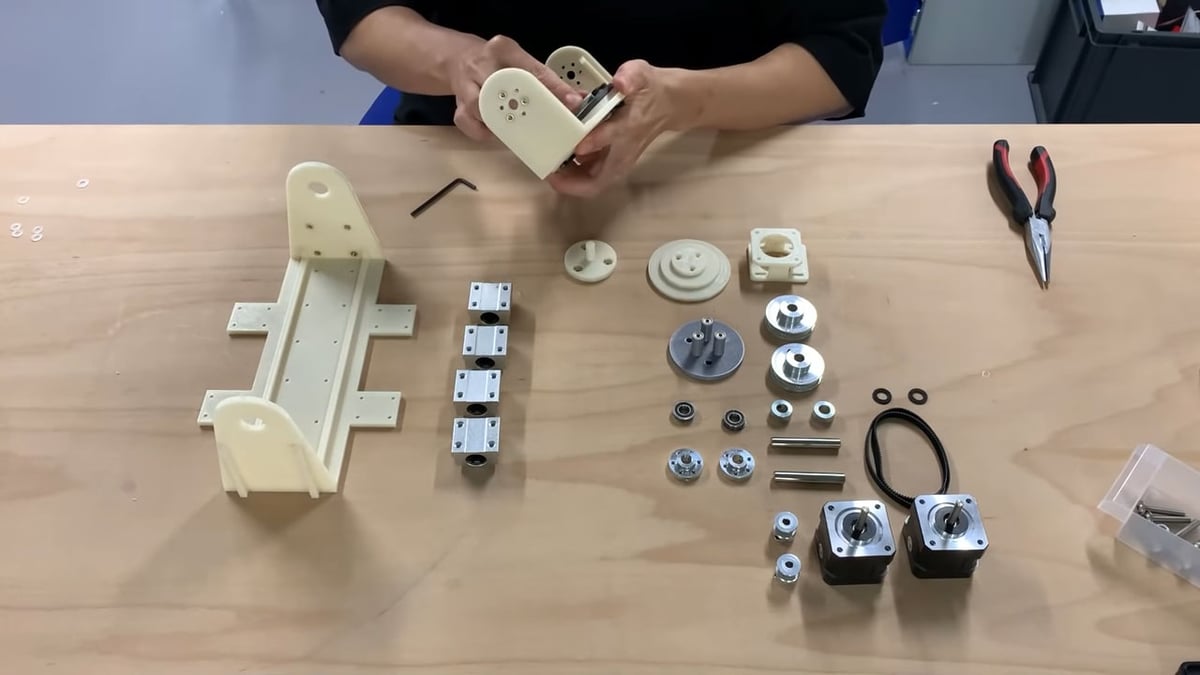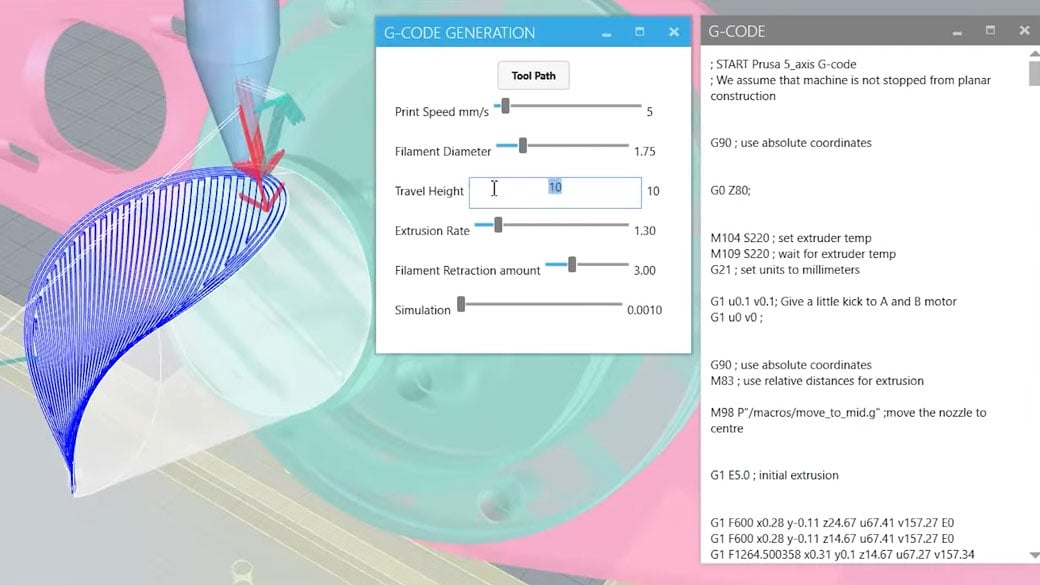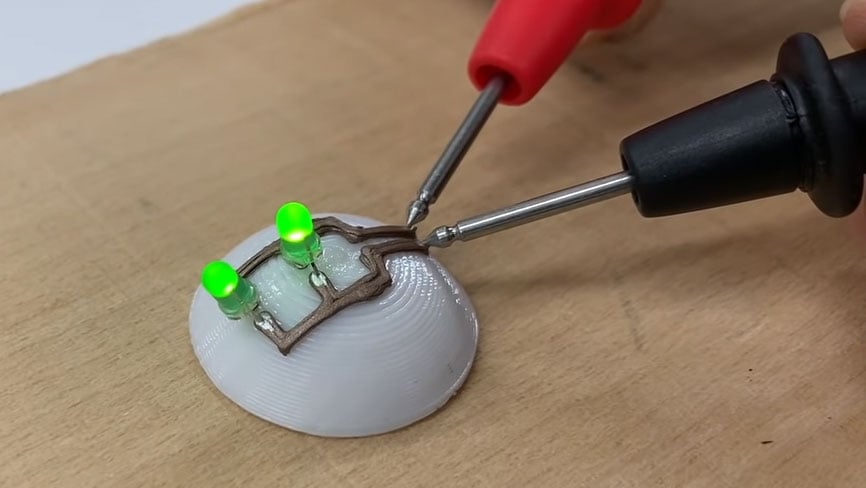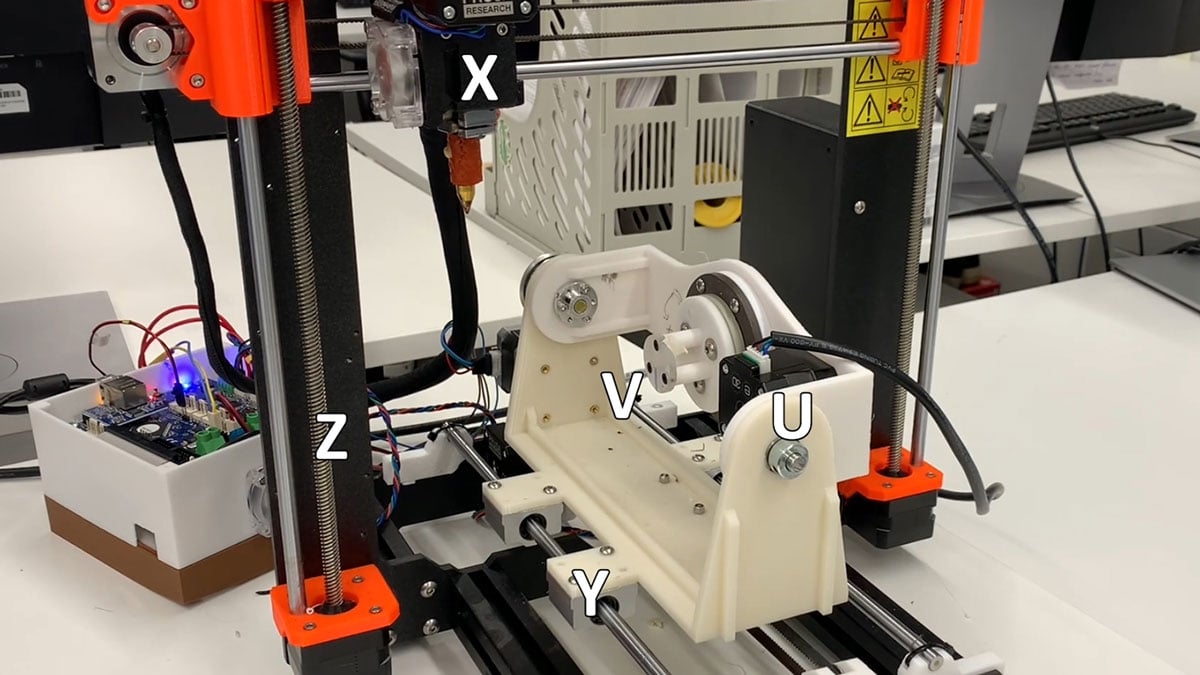There’s been a lot of chatter in the 3D printing community about non-planar FDM 3D printing recently. The Open5x project takes a slightly different approach from the implementations we’ve seen so far.
Open5x has been developed by Freddie Hong, Borut Lampret, Steve Hodges Connor Myant, and David Boyle at the Dyson School of Design Engineering, Imperial College London. The open-source hardware modifies a Prusa Research i3 3D printer with extra motors, some common hardware, and additional 3D printed parts. Everything is controlled by Duet3D electronics running on RepRap Firmware.


- Enhanced object structure: A perpendicular extrusion direction means layers are cross-laminated, so 3D printed items can withstand multi-directional load. Enhanced part strength makes multi-axis 3D printing a viable option for 3D printed wearable prosthetics, bridge structures, and many more practical things.
- Supportless 3D printing: Multi-axis 3D printing doesn’t need support material, which means less material waste, higher-quality surface finishes, and better-quality fine features which aren’t damaged by support material removal.
- Functional materials: A multi-axis machine can extrude layers that conform to a surface, giving better performance. Conductive filaments can be extruded to non-planar surfaces while maintaining good electrical continuity. Non-planar TPU surface layers can add texture, chemical resistance, anti-slip properties, and so on.

Freddie Hong, who initiated the Open5x project as part of his PhD research, has kindly given us some insider information:
All3DP: What inspired you to create Open5x?
FH: Conventional 3D printed objects have a planar construction where the material is deposited layer-upon-layer. While this significantly simplifies the fabrication process, the layered structure has clear downsides that limit the usability of 3D printed objects. For instance, the structural strength of 3D printed objects is weak in the vertical direction (inter-layer) compared to the horizontal direction (intra-layer).
I have particular types of filament that perform best when 3D printed with continuous extrusion, so I looked for options for non-planar 3D printing. There are two main methods to do this: using three axes (like most 3D printers) or using a multi-axis setup. The multi-axis method is superior because there’s no limit to the incline angle. In addition, non-planar 3D printing has limited design options, whereas 5-axis doesn’t. Most people who have explored 5-axis 3D printing have used robotic arms or modified 5-axis CNC machines that use an extruder head instead of a spindle. I found existing plans for a few DIY 5-axis 3D printers, and this gave me the motivation to build one myself.
The goal of Open5x was to design a 5-axis machine that was accessible and easy to implement, and this has been achieved by converting an existing machine instead of building entirely new hardware from scratch. The popularity of Prusa machines makes them an ideal candidate to modify.

FH: Like many in this community, my first 3D printer was a RepRap 3D printer. I built it myself with lots of help from local 3D printing enthusiasts. It was really useful for making architectural models for my undergraduate degree. 3D printers have developed so much through community collaboration, and I think 5-axis 3D printing can also benefit from this way of working.
All3DP: Where do you see the Open5x project going in the future?
FH: Right now, the Open5x slicer uses Rhino and Grasshopper, which requires a commercial license. This is a barrier that limits the broader adoption of the technique. As a community, we need to develop a free and open-source 5-axis slicing platform with an excellent user-friendly interface. This will enable more people to engage in the project and contribute.
It’s also worth considering that 5-axis 3D printing requires more thought during the design process. With more options come more decisions, so extra consideration needs to be taken with the slicing process.
Learn more about Open5x
If you’d like to learn more, there’s plenty of information available on the Open5x GitHub repository. The original research paper is also available, which details the underpinning theory.
Open Source Tip Offs
Have you seen a noteworthy open-source 3D printing project? Tip us off at @all3dp on Twitter or by email at editors@all3dp.com, and we’ll consider covering them.
You’ve read that; now read these:
Lead image source: Freddie Hong
License: The text of "Open-Source 5-Axis Prusa Upgrade: A Closer Look" by All3DP is licensed under a Creative Commons Attribution 4.0 International License.
